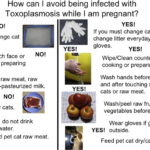Total parenteral nutrition (TPN), while essential in patients unable to meet nutritional needs enterally, carries the risk of hepatic complications, most notably TPN-associated cholestasis. This condition, particularly prevalent among neonates and critically ill patients, involves impaired bile flow, leading to hepatobiliary dysfunction. Early recognition and proactive management are vital to reducing the incidence and long-term consequences of this disorder.

Pathophysiology of TPN-Associated Cholestasis
Cholestasis in the context of TPN is multifactorial, arising from disrupted bile secretion, hepatocellular injury, and inflammation due to nutrient imbalance, infection, and lack of enteral stimulation.
Factors such as excessive glucose, lipid emulsions rich in omega-6 fatty acids, and deficiencies in essential nutrients (e.g., choline, taurine) contribute to hepatic steatosis, cholestasis, and fibrosis.
Incidence and Risk Populations
Neonates and Preterm Infants
Infants, especially preterm neonates, represent the highest-risk group for TPN-associated cholestasis due to:
- Immature liver function
- Prolonged need for parenteral nutrition
- Increased susceptibility to infections
- Delayed initiation of enteral feeds
Critically Ill Adults
Though less common, cholestasis in adults receiving long-term TPN is linked to:
- Multisystem organ failure
- Sepsis
- Catheter-related bloodstream infections
- Hepatic steatosis due to metabolic overload
Clinical Presentation and Laboratory Diagnosis
Signs and Symptoms
Patients may initially present with:
- Elevated direct (conjugated) bilirubin
- Hepatomegaly
- Jaundice (in advanced cases)
- Pruritus
- Dark urine, pale stools
Laboratory Findings
A comprehensive hepatic panel typically reveals:
| Parameter | Expected Change |
|---|---|
| Direct Bilirubin | ↑ Elevated |
| Alkaline Phosphatase | ↑ Elevated |
| Gamma-glutamyl transferase (GGT) | ↑ Elevated |
| Aspartate Transaminase (AST) | Mild ↑ |
| Alanine Transaminase (ALT) | Mild ↑ |
Additional assessments may include ultrasound to rule out obstructive causes and liver biopsy in persistent or worsening cases.
Underlying Mechanisms Behind TPN-Related Cholestasis
1. Absence of Enteral Feeding
The absence of enteral nutrition leads to:
- Decreased secretion of gut hormones (e.g., cholecystokinin)
- Reduced gallbladder contraction
- Intestinal mucosal atrophy
- Bacterial overgrowth contributing to hepatic inflammation
2. Lipid Emulsion Composition
Traditional lipid emulsions high in omega-6 fatty acids and phytosterols contribute to:
- Hepatic inflammation
- Impaired bile secretion
- Oxidative stress
3. Infections and Sepsis
Systemic infections, particularly central line-associated bloodstream infections (CLABSIs), exacerbate hepatic injury through cytokine-mediated pathways and cholestatic effects.
4. Nutrient Deficiencies and Toxicities
Deficiencies in carnitine, choline, taurine, zinc, and other micronutrients impair hepatic metabolism and bile acid conjugation.
Prevention of TPN-Associated Cholestasis
Early Initiation of Enteral Nutrition
Even minimal enteral feeding (“trophic feeds”) stimulates bile flow and reduces cholestasis risk. Introducing enteral feeds as soon as clinically tolerated is paramount.
Cyclic TPN Administration
Cyclic TPN (over 12–18 hours instead of 24 hours) allows hepatic “rest,” improves bile flow, and lowers liver enzyme elevations.
Optimizing Lipid Emulsions
- Use of fish oil-based lipid emulsions (e.g., Omegaven) rich in omega-3 fatty acids is associated with reduced inflammation and improved liver outcomes.
- Limiting total lipid dose to <1 g/kg/day in cholestatic patients may be beneficial.
Preventing and Managing Infections
- Adhering to central line care bundles
- Prompt removal of infected catheters
- Antibiotic stewardship to reduce bacterial overgrowth and liver stress
Treatment Strategies for TPN-Associated Cholestasis
Nutritional Modifications
- Maximize enteral intake and reduce TPN dependence
- Transition to full enteral feeds when possible
- Supplement with essential nutrients like taurine and choline
Pharmacological Interventions
| Drug | Mechanism | Clinical Use |
|---|---|---|
| Ursodeoxycholic Acid | Increases bile flow | Reduces cholestasis markers |
| Phenobarbital | Enhances bile secretion | Adjunct in persistent cases |
| Fish Oil Emulsions | Anti-inflammatory lipid support | Hepatoprotective alternative |
Surgical and Invasive Options
In rare, refractory cases:
- Intestinal transplantation
- Biliary diversion procedures (in neonates with intestinal failure)
Long-Term Outcomes and Monitoring
Prolonged cholestasis may progress to fibrosis, cirrhosis, and liver failure if unaddressed. Regular monitoring is essential:
- Monthly liver function tests during prolonged TPN
- Ultrasound for hepatosplenomegaly or biliary dilatation
- Growth and development tracking in infants
Early recognition and intervention are critical to prevent irreversible hepatic damage and improve prognosis.
Summary of Clinical Guidelines
| Strategy | Application |
|---|---|
| Early enteral nutrition | Initiate as soon as tolerated |
| Monitor liver function | Baseline and ongoing during TPN |
| Use fish oil-based lipids | Especially in cholestatic patients |
| Implement cyclic TPN | Reduce continuous liver stress |
| Treat infections aggressively | Remove or replace catheters early |
| Supplement deficient nutrients | Choline, taurine, zinc, carnitine |
TPN-associated cholestasis remains a significant challenge in the management of patients requiring prolonged parenteral nutrition, particularly neonates. Through vigilant monitoring, judicious use of nutritional therapies, and timely transition to enteral feeding, we can mitigate hepatic complications and preserve long-term liver function. Adopting evidence-based protocols and innovative lipid formulations ensures improved outcomes and reduced burden of parenteral nutrition-associated liver disease (PNALD).

